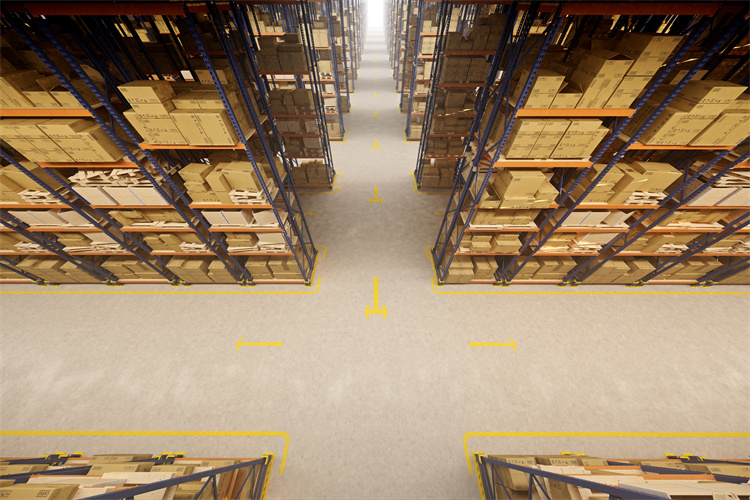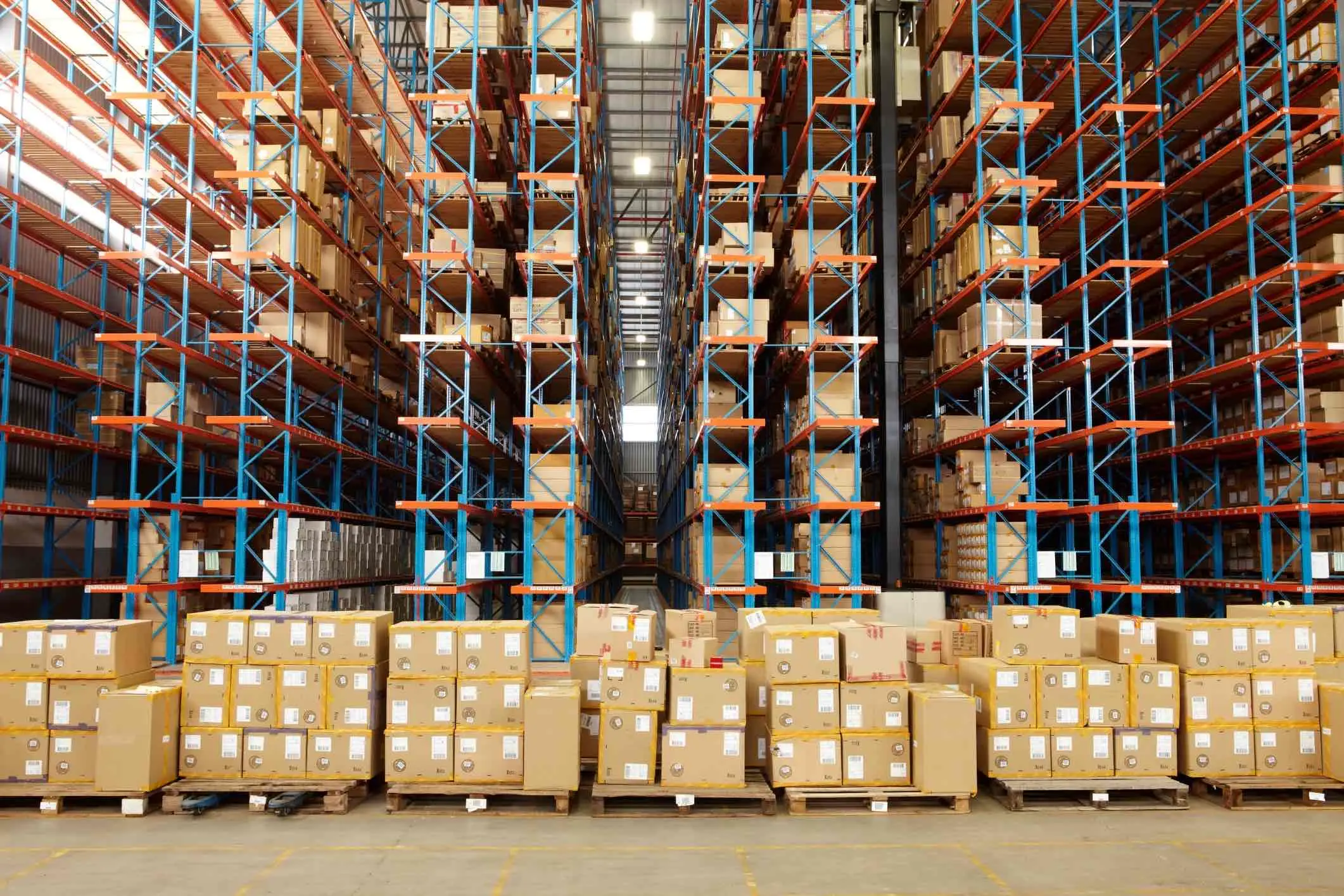How the China-Europe Railway Express is Shaping Global Trade

The china europe railway express has become a game-changer in logistics, efficiently connecting China and Europe across vast distances. With transit times that are three times faster than traditional sea routes, the china europe railway express has revolutionized the speed of trade. In 2023, it successfully transported 1.9 million TEUs of containers, underscoring its expanding significance in global trade. This extensive network not only cuts transportation costs by up to 50% but also strengthens connectivity across more than 30 countries in Eurasia, promoting deeper economic integration and revitalizing regional economies.
Key Takeaways
The China-Europe Railway Express significantly reduces transit times, taking only 15 to 18 days compared to 40 to 60 days by sea, making it ideal for time-sensitive shipments.
Businesses can save up to 50% on transportation costs by choosing rail freight over air transport, while still benefiting from faster delivery than traditional sea routes.
The railway network promotes environmental sustainability by producing lower carbon emissions than air and road transport, aligning with global efforts to combat climate change.
Enhanced reliability and security of goods transported by rail minimize risks of theft and damage, providing businesses with peace of mind and predictable delivery schedules.
The China-Europe Railway Express fosters economic growth in regions along its routes, particularly benefiting landlocked areas by connecting them to international markets.
Small and medium enterprises (SMEs) gain a competitive edge through reduced costs and faster transit times, enabling them to thrive in the global marketplace.
Future expansions and innovations in rail technology are set to enhance the efficiency and capacity of the railway, further solidifying its role in international logistics.
The China-Europe Railway Express: A Key Link in Global Trade

Overview of the China-Europe Railway Express
The China-Europe Railway Express, also referred to as the China Railway Express (CRE), represents a transformative development in international logistics. This extensive network of multimodal container rail services connects major cities in China with their counterparts across Europe. By offering overland transportation, it provides an alternative to traditional maritime trade routes, significantly reducing transit times and enhancing efficiency.
The origins of this railway system can be traced back to the Industrial Revolution, which laid the foundation for modern rail networks in Europe. However, the launch of the China-Europe Railway Express in the 21st century marked a new era of economic cooperation between Asia and Europe. Its establishment has revitalized the concept of the ancient Silk Road, creating a modern trade corridor that mirrors the historical significance of its predecessor.
Connection to the Belt and Road Initiative
The China-Europe Railway Express plays a pivotal role in the Belt and Road Initiative (BRI), a global development strategy introduced by China. The BRI aims to enhance connectivity and foster economic collaboration among countries along the ancient Silk Road and beyond. The railway serves as a critical component of this initiative, linking the Silk Road Economic Belt with the 21st Century Maritime Silk Road.
By integrating the railway into the BRI framework, China has strengthened its position in global trade. The railway not only facilitates the movement of goods but also promotes economic integration between participating nations. It has become a symbol of modern infrastructure development, bridging geographical and economic gaps between Asia and Europe.
Major Routes and Destinations
The Yiwu-Madrid Route
The Yiwu-Madrid route stands out as one of the most significant corridors within the China-Europe Railway Express network. Spanning over 8,000 miles, it connects Yiwu, a major trading hub in eastern China, to Madrid, the capital of Spain. This route is renowned for being the longest rail freight route in the world.
The Yiwu-Madrid corridor has become a vital artery for transporting goods such as electronics, textiles, and machinery. Its success demonstrates the potential of rail freight to compete with traditional shipping methods. The route has also contributed to the economic growth of regions along its path, fostering trade and investment opportunities.
Other Prominent Corridors
In addition to the Yiwu-Madrid route, the China-Europe Railway Express operates several other prominent corridors. These include connections between Chongqing and Duisburg, Chengdu and Lodz, and Zhengzhou and Hamburg. Each route caters to specific trade demands, ensuring efficient transportation of goods across diverse markets.
These corridors collectively enhance the railway's capacity to serve as a reliable link in global trade. They connect over 30 countries, facilitating the exchange of goods and strengthening economic ties between regions. The expansion of these routes underscores the growing importance of the China-Europe Railway Express in shaping the future of international logistics.
Benefits of the China-Europe Rail Freight Network
Faster Transit Times Compared to Sea Freight
The china-europe rail freight network offers a significant advantage in transit times. Rail freight takes approximately one-third of the time required by sea transport, making it an ideal choice for businesses that prioritize speed. For instance, goods transported via rail from China to Europe typically take 15 to 18 days, compared to the 40 to 60 days required by maritime shipping. This expedited delivery enables companies to respond quickly to market demands and maintain leaner inventory levels. By bridging the gap between air and sea freight in terms of speed, rail freight has become a competitive option for time-sensitive shipments.
Cost-Effectiveness for Businesses
The cost-effective solution for international trade provides a cost-effective solution for international trade.
Environmental Sustainability
Rail freight stands out as one of the most environmentally friendly modes of transportation. It produces lower carbon emissions compared to air and road transport, contributing to global efforts to combat climate change. The china-europe rail freight network emphasizes sustainability by offering a greener alternative for moving goods across continents.
Lower Carbon Emissions Compared to Air Freight
Rail freight generates significantly fewer carbon emissions than air freight. For example, transporting goods by rail emits only a fraction of the greenhouse gases produced by airplanes. This reduction in emissions aligns with the growing demand for eco-friendly logistics solutions. Businesses that choose rail freight not only lower their environmental impact but also enhance their corporate social responsibility profiles. By integrating rail freight into their supply chains, companies can meet sustainability goals while maintaining efficient operations.
Enhanced Reliability and Security of Goods
The reliable and secure mode of transportation for international trade.
Security is another critical advantage of the china-europe rail freight system. Goods transported by rail are less susceptible to theft or damage compared to other modes of transport. Containers remain sealed throughout the journey, minimizing the risk of tampering. Additionally, the railway network employs advanced tracking technologies, enabling businesses to monitor shipments in real-time. This transparency enhances trust and ensures that goods reach their destinations intact.
The shorter transit times of rail freight also contribute to its reliability. By taking only 15 to 18 days to transport goods between China and Europe, it significantly reduces the chances of perishable items spoiling during transit. This makes it an ideal choice for industries such as food and pharmaceuticals, where product integrity is paramount.
Furthermore, the china-europe rail freight network benefits from robust infrastructure and streamlined customs procedures. Dedicated rail corridors and partnerships between countries along the route ensure smooth operations. These factors collectively enhance the efficiency and security of the rail freight system, making it a preferred option for businesses seeking dependable logistics solutions.
Economic Impact of the China-Europe Railway Express
Transforming Trade Between China and Europe
The China-Europe Railway Express has redefined trade dynamics between China and Europe. By offering a faster and more reliable alternative to sea freight, it has significantly enhanced the flow of goods across continents. Businesses now benefit from reduced transit times, with goods reaching European markets in just 15 to 18 days, compared to the 30 to 40 days required by sea transport. This efficiency allows companies to respond swiftly to market demands, ensuring a steady supply of products.
The railway's role in stabilizing trade became particularly evident during the pandemic. While global shipping faced disruptions due to port congestion and container shortages, the China-Europe rail freight network maintained consistent operations. Its ability to bypass weather-related delays and port bottlenecks ensured uninterrupted trade, reinforcing its importance as a dependable logistics solution. This transformation has not only strengthened economic ties between China and Europe but also positioned the railway as a cornerstone of modern trade.
Promoting Regional Economic Development
The China-Europe Railway Express has spurred economic growth in regions along its routes. By connecting inland cities to international markets, it has unlocked new opportunities for trade and investment. This connectivity has revitalized local economies, fostering industrial development and creating jobs.
Growth in Landlocked Regions
Landlocked regions, often disadvantaged due to their lack of access to seaports, have experienced remarkable economic benefits from the railway. Cities such as Chongqing and Zhengzhou in China have emerged as major logistics hubs, leveraging their strategic positions along the railway network. These regions now serve as gateways for goods traveling between China and Europe, attracting investments and boosting local industries.
In Europe, cities like Duisburg and Lodz have also witnessed economic revitalization. The railway has transformed these locations into key distribution centers, facilitating the movement of goods across the continent. This growth underscores the railway's potential to bridge economic disparities and promote balanced regional development.
Expanding Market Opportunities for Businesses
The China-Europe Railway Express has opened new avenues for businesses seeking to expand their market reach. By providing a cost-effective and efficient transportation solution, it has enabled companies to access diverse markets across Eurasia.
Benefits for Small and Medium Enterprises (SMEs)
Small and medium enterprises (SMEs) have particularly benefited from the railway's economic advantages. The reduced transportation costs—up to 50% lower than air freight—make it an affordable option for SMEs with limited budgets. Additionally, the faster transit times compared to sea freight allow these businesses to compete effectively in international markets.
The railway's reliability further enhances its appeal to SMEs. With fixed schedules and streamlined customs procedures, businesses can plan their supply chains with confidence. This predictability minimizes risks and ensures timely delivery of goods, enabling SMEs to build trust with their customers. By leveling the playing field, the China-Europe rail freight network has empowered smaller enterprises to thrive in the global marketplace.
Case Study: The Yiwu-Madrid Route

Overview and Significance of the Route
The Yiwu-Madrid route, spanning over 8,000 miles, represents the longest rail freight route in the world. It connects Yiwu, a bustling trade hub in eastern China, to Madrid, Spain's capital and a key European economic center. This route has become a cornerstone of the China-Europe Railway Express, facilitating the movement of goods across continents with remarkable efficiency.
The route's significance lies in its ability to bridge two major markets. Yiwu, known as the "world's largest small commodities market," exports a wide range of goods, including textiles, electronics, and household items. Madrid, on the other hand, serves as a gateway to European markets, making the route a vital artery for trade. By reducing transit times to approximately 21 days, the Yiwu-Madrid corridor offers a faster alternative to sea freight, which typically takes 40 to 60 days. This efficiency has made it an attractive option for businesses seeking to streamline their supply chains.
The route also plays a pivotal role in stabilizing global supply chains. In 2023 alone, the China-Europe Railway Express transported 1.9 million TEUs of containers, underscoring its growing importance in international logistics. The Yiwu-Madrid route exemplifies how rail freight can enhance trade connectivity while promoting economic integration between Asia and Europe.
Success Stories in Trade Growth
The Yiwu-Madrid route has catalyzed significant trade growth between China and Europe. Businesses leveraging this corridor have reported substantial improvements in logistics efficiency and cost savings. For instance, a Chinese home appliance manufacturer reduced transport time from 45 days via sea to just 20 days by rail, cutting transportation costs by 30%. This shift not only enhanced the company's operational efficiency but also allowed it to meet market demands more effectively.
The route has also contributed to the broader growth of trade volumes. Between 2013 and 2022, trade between China and Europe surged from 4 trillion yuan to 7.42 trillion yuan. The Yiwu-Madrid corridor played a crucial role in this expansion by offering a reliable and efficient transportation solution. Its ability to handle diverse cargo types, from electronics to perishables, has further solidified its position as a preferred choice for businesses.
Moreover, the route has fostered economic development in regions along its path. Cities like Duisburg in Germany and Lodz in Poland have emerged as key logistics hubs, benefiting from increased trade activity. These success stories highlight the transformative impact of the Yiwu-Madrid route on global trade dynamics.
Insights and Future Potential
The Yiwu-Madrid route holds immense potential for shaping the future of international trade. Its success demonstrates the viability of rail freight as a competitive alternative to traditional shipping methods. As demand for faster and more sustainable logistics solutions grows, the route is poised to play an even greater role in global supply chains.
Future developments could include the expansion of services to accommodate higher cargo volumes. With annual trips projected to exceed 17,000 by 2024, the China-Europe Railway Express is set to handle an increasing share of trade between the two regions. Innovations in rail technology and infrastructure could further enhance the route's efficiency and reliability.
The route also offers opportunities for deeper economic collaboration. By connecting 91 cities across China to European markets, it accelerates the flow of goods and optimizes resource allocation. This connectivity fosters stronger trade relationships and opens new avenues for investment.
Challenges and Future Prospects of the China-Europe Railway Express
Current Challenges in Infrastructure and Geopolitics
The China-Europe Railway Express has achieved remarkable milestones, but it faces significant challenges that could hinder its growth. Addressing these issues is crucial for ensuring its long-term success and sustainability.
Addressing Infrastructure Bottlenecks
Infrastructure limitations remain a pressing concern for the railway network. Many regions along the route lack the necessary facilities to handle the increasing volume of freight. Insufficient rail capacity, outdated equipment, and limited terminal infrastructure create bottlenecks that slow down operations. These inefficiencies disrupt the seamless flow of goods and increase transit times.
To overcome these challenges, stakeholders must invest in modernizing rail infrastructure. Expanding rail capacity, upgrading terminals, and implementing advanced technologies can enhance operational efficiency. For example, the integration of automated systems for cargo handling and tracking can streamline processes and reduce delays. Such improvements will ensure that the railway can accommodate growing trade volumes while maintaining reliability.
Navigating Geopolitical Tensions
Geopolitical tensions pose another significant challenge for the China-Europe Railway Express. The railway traverses multiple countries with varying political climates, which can lead to disruptions in operations. Trade policies, border disputes, and diplomatic conflicts often create uncertainties that affect the smooth functioning of the network.
Strengthening diplomatic relations and fostering mutual trust among participating nations is essential for mitigating these risks. Collaborative agreements that prioritize trade cooperation can help stabilize the railway's operations. Additionally, establishing clear and consistent customs procedures across borders can minimize delays and enhance the predictability of freight movements. By addressing geopolitical challenges, the railway can continue to serve as a reliable link in global trade.
Future Expansion Plans and Innovations
The future of the China-Europe Railway Express lies in its ability to adapt and innovate. Expansion plans and technological advancements will play a pivotal role in shaping its growth trajectory.
The railway aims to extend its reach by connecting more cities and regions across Eurasia. Plans to increase the number of routes and destinations will enhance its capacity to serve diverse markets. For instance, expanding services to include more landlocked regions can unlock new trade opportunities and promote economic development.
Innovations in rail technology will further boost the railway's efficiency and competitiveness. High-speed freight trains, smart logistics systems, and eco-friendly solutions can revolutionize the transportation process. These advancements will not only reduce transit times but also align with global sustainability goals. By embracing innovation, the China-Europe Railway Express can solidify its position as a leader in international logistics.
Strengthening International Cooperation for Growth
International cooperation is vital for the continued success of the China-Europe Railway Express. Collaborative efforts among participating countries can drive growth and ensure the railway's sustainability.
"The train services provide a guarantee for the timely arrival of our goods and effectively reduce our operational risks," said Zhang Rong, deputy general manager of Yuxinou (Chongqing) Logistics Co., Ltd. This statement highlights the importance of coordinated efforts in maintaining the reliability of the railway network.
Establishing integrated supply chain systems along the route can enhance trade efficiency and foster stronger connections between nations. Feng Xubin, a key figure in the development of the Yiwu-Madrid route, emphasized the need for such systems, stating, "We hope to set up an integrated system of supply chain along the route to reach the goal of the Belt and Road Initiative China has proposed."
Joint investments in infrastructure, technology, and workforce development can further strengthen the railway's capabilities. Collaborative initiatives that prioritize trade cooperation will ensure that the railway continues to thrive as a cornerstone of global trade.

JUSDA Solutions
To provide you with professional solutions and quotations.
The China-Europe Railway Express has emerged as a transformative force in global trade. Its ability to provide faster, more sustainable, and cost-effective logistics solutions has redefined how goods move between continents. By fostering economic integration and enhancing connectivity between China and Europe, the railway has reshaped global markets and revitalized regional economies. As it continues to expand and address challenges such as infrastructure bottlenecks and geopolitical tensions, the railway holds immense potential to further revolutionize global trade. Sustained investment and strengthened international cooperation will be critical in unlocking its future possibilities.
See Also
Addressing Global Supply Chain Growth Issues Effectively
Exploring How Global Trade Policies Shape Economies
Discovering Innovations in Sea Freight Logistics for 2024
